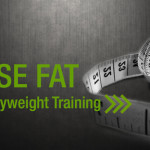A couple of years ago, when I quit lifting weights and began focusing on bodyweight exercises, muscle ups were a huge goal for me to strive for.
To me muscle ups are one of a true exercises that define bodyweight excellence. A muscle up is an impressive display of strength, coordination and explosiveness that even very fit people may have a hard time accomplishing with practice. It’s an exercise engages the whole upper body in a way few other exercises does.
While completing the first muscle up is a feat in its own right, I don’t think bodyweight athletes should stop there. You’ll likely hit your first muscle up kipping style, by swinging and kicking to get your weight above the bar. Next most athletes move to a kipping muscle up on rings (if available), followed by strict bar muscle ups (no swinging) and finally, the strict ring muscle ups.
There is some variation in reported difficulty by athletes, for me personally I found the strict bar muscle ups the hardest, due to the effort needed to get around over the bar. Other athletes find the strict ring muscle up the hardest because of the necessary stabilisation one must achieve in addition to getting up and over.
Today we’re going to cover these 4 variations in detail. If you’re already doing basic muscle ups, or even a little further along, this article will help you hit a true muscle up without assistance (no kipping)
Each of these forms of muscle ups has its own difficulties to deal with and their own benefits and I really recommend exploring each one of them.
The muscle up is a three part dynamic movement that consists of a pull up, followed by a transition phase where the shoulders need to travel from under the bar to above the bar, and is finished of with a straight bar-dip. The main problem many face when trying out the muscle up is the transition phase; there seems to be no way the shoulders and upper body can move from the upper pull up-position to the lower part of a straight bar-dip. There are a two ways to accomplish just that; by momentum or by sheer strength.
To false grip or not?
The false grip is a kind of hand placement on the bar or rings where you hook your hand over the bar or ring. The ring or bar will rest in the area between your wrist and palm instead of in your palm. This will result in your hands already being where they need to be after the transition phase (in order to begin your straight bar dip at the top).
With an ordinary pull up grip your hands need to rotate at the same time your upper body shifts forward to get in position for the push. This may be fine when a muscle up is done relying on momentum, but it makes it almost impossible to complete a slow muscle up.
I would recommend doing pull ups with a false grip, both on bar and rings, from the start to condition yourself to a strong false grip. It will pay off in the long run.
1) The Kipping Bar Muscle Up
This variation may be considered the easiest but it still requires some decent strict pull-up strength, a few chest-to-bar or sternum-to-bar pull ups and a decent efficiency in straight bar-dips. By kicking the legs during the pull you can create enough momentum to drive you through the transition point to get your shoulders above the bar. In the beginning it can be helpful to let the body swing slightly in the lower pull up-position and time the pull when your body is swinging towards your back, and thus helping with the momentum created by the swing.
One thing to note is that you should do the pulling movement and pull the bar down in front of you slightly, instead of pulling straight down. This will make it possible to curve your body around the bar in an S-shape (shown in the video below).
If I time the pull with my body swinging back and make a strong kick with straight legs I will have strong movement to go up and over the bar. When the bar is in line with my lower chest, I do a fast lean forward with my upper body, elbows back and find myself in the lower position of a straight bar-dip. One should strive for reducing the kipping movements over time as you get more proficient with the movement.
2) The Kipping Ring Muscle Up
This variation is a little harder to accomplish since the rings are not a stable object like the bar, but moving ones. What makes this form somewhat easy is that you don’t need to bend yourself around the rings, you will shoot straight up through the rings instead. A false grip may not be required for this one but you may as well begin using it to strengthen your false grip.
I would recommend having some experience with ring-pull ups and deep ring-dips before trying this one out. I’m a big fan of weighted pull ups and they will serve you well here as well as in the previous muscle up form on bars. If you have problems doing ring-dips because of shoulder pain or something similar you may want to skip this one, because this movement puts the shoulders in a deep stretch-position.
The theory is the same as kipping bar-muscle up; by kicking with your legs you create momentum to propel you up. I begin with securing a strong false grip and enter the low pull up-position. I tend to bend my body slightly backwards and begin an explosive pulling-movement and at the same time kicking with both legs extended. When the rings are at the level of my chest I do another fast lean forward, bring my elbows back so they are tight to my sides and I end up in the lower part of a ring-dip. Then it’s simply a matter of completing the dip.
As with kipping bar muscle up I recommend reducing the kipping-movement over time so you rely more on the strength aspect of the pull.
3) The Strict Bar Muscle Up
This is where things get difficult (and fun). No more crossfit muscle ups!
It takes some time to work up to enough strength to complete the transition over with no momentum involved. For me negative reps worked wonders; to begin in the top position of the dip and then as slowly as possible lower myself through the transition and work those negatives as reps. Another exercise I used to condition myself was heavy weighted pull ups and dips. For pull-ups I worked sets reps with around 50% of my bodyweight added in weights. In time the strength required to complete the strict ring-muscle up will come. Explosive chest-to-bar pull-ups with added weight was also included in my prep-workouts.
The sticking points that made this move possible, except the necessary strength, was a really strong false grip and a more narrow grip than your regular pull up grip; around in the middle of your collarbones. With time you’ll be able to move your arms wider and wider. You need to curve yourself around the bar and what I found helpful was to pull myself up in an L-sit position. In any case you need to have some part of your legs in front of the bar to act as a counterweight.
I prepare the move by securing a tight false grip and put myself in the start position of an L-sit pull up. I pull myself slightly bent backwards and when the bar is cleared I roll the shoulders forward and the elbows back and then begin the dip push.
4) The Strict Ring Muscle Up
The big Kahuna. The Muscle Up.
One of the most important factors with this variation is the false grip and an understanding of how to use your bodyweight to aid you instead of hinder you. I find it very helpful to keep the movement very tight; hands and rings close together and the rings close to your body during the pull. As with many other bodyweight exercises tense your whole body to create a solid foundation.
For training to this level something that worked well was the use of resistance bands. I fastened a resistance band between the rings, and sat on the band in a L-sit position and then worked the transition from pull to lower dip position.
I start with the false grip and lower myself to the lower pull up position. I find it easier to enter a sort of L-sit position during the pull because that creates a natural movement when it’s time to shift the body weight forward. I do the false grip pull up slightly bent backwards and when the hands is about shoulder level or slightly lower it’s time to move the shoulders forward.
You’ll find it helpful to imagine that your thumbs are following the lower part of the pecs when you bring your elbows towards your back. Shoulders shifts forward, leg drops and elbows are moving towards the back. The false grip helps enormously here since it will automatically will bring your hands to the right place. Then it’s time for the push.
BOOM. You just did your first true muscle up.
No matter where you are on the muscle up progression you can develop different strength and physical expertise from each of these 4 variations. Figure out where you are and get started today!
Let us know in comments what are your favourite muscle up variations!
Editor’s Note:





